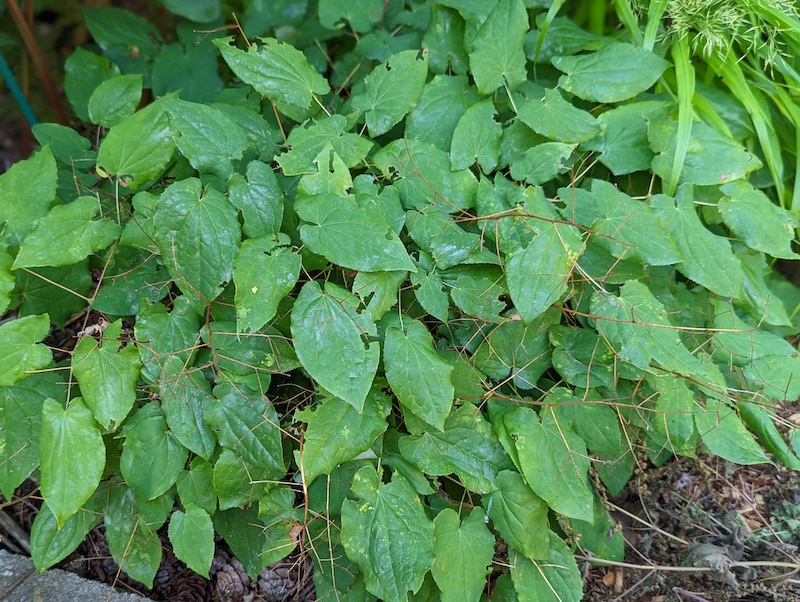Depending on the species, barrenwort may be evergreen or semi-evergreen. Only evergreen varieties, such as Epimedium ‘Pink Champagne’ need to be pruned. These varieties do not shed their leaves, so it is important that dead and damaged leaves are trimmed away to rejuvenate the plant and encourage fresh growth. Make sure to cut any finished blooms so that you do not hinder the growth of new flowers.

When to Prune Barrenwort
Prune your barrenwort once a year before flowering time. Depending on your location and conditions, this could be in late winter or early spring. These ground cover plants produce colorful foliage in the winter, which is one reason to wait until early spring to prune. However, if the plant is looking disheveled by the late fall, it may be a good time to trim.
While the best time to prune barrenwort is late fall or winter before blooming, you may need to prune early if your plant suffers from parasites like botrytis fungus or pests like aphids. Trimming will help control any pests or diseases attacking your plant. You can also tidy up your barrenwort during early summer by deadheading.

Why Prune Barrenwort
Barrenwort spreads quickly, so pruning is an effective way to keep the plant from becoming overgrown while also encouraging new growth. Pruning is also helpful in keeping pests and diseases at bay.
How to Prune Barrenwort
Step 1 - Trim any fading or dead leaves away.
Step 2 - Deadhead any spent blooms.
Barrenwort Pruning Tips
- Use sharp, sterilized pruning shears to remove old foliage.
- Cut back spent foliage in early winter (January) so you don’t run the risk of cutting the emerging flower stems.
- Rake underneath your evergreen or semi-evergreen barrenwort plants after pruning. This will loosen mulch and improve soil moisture and drainage.
 |
Author Chris Link - Published 01-12-2023 |
